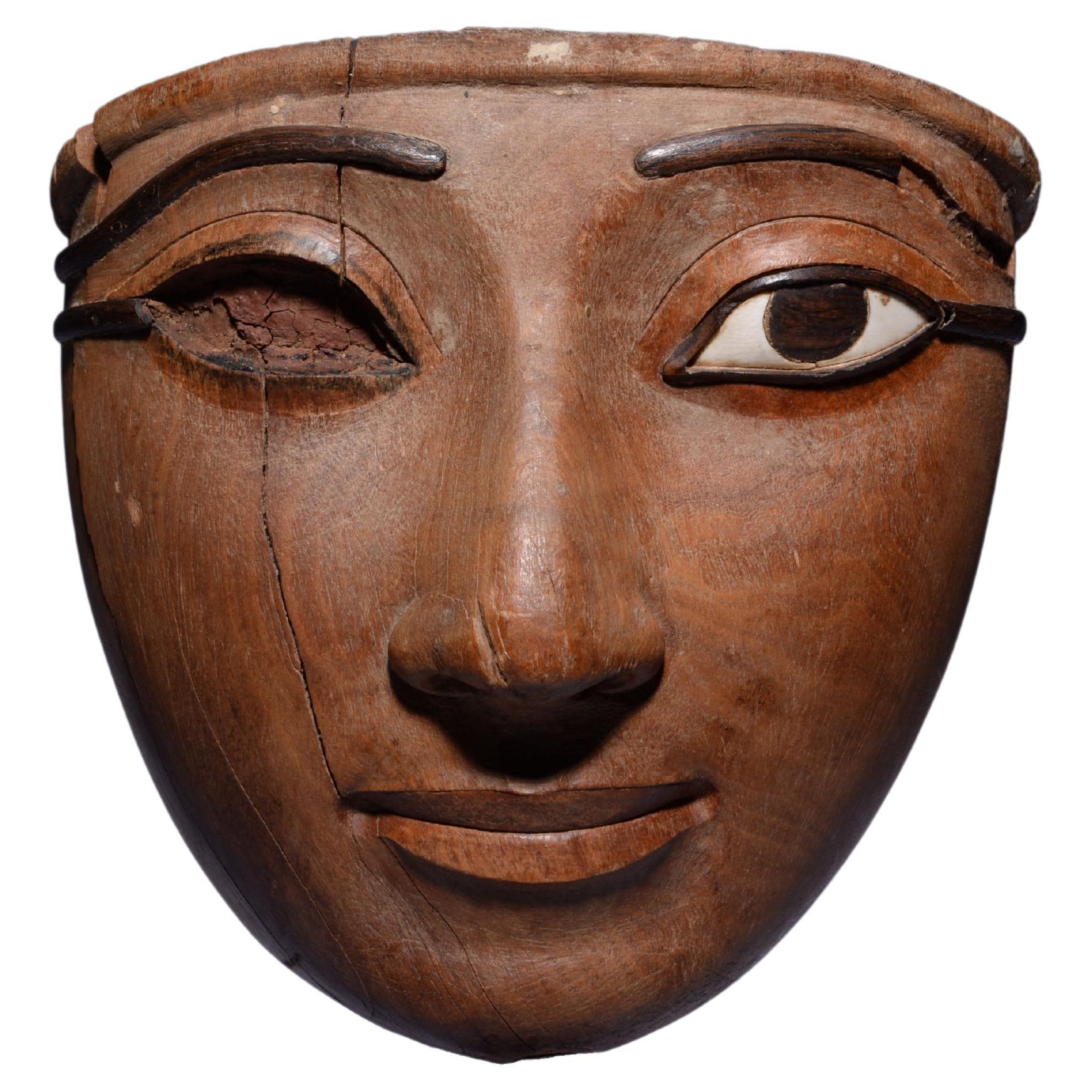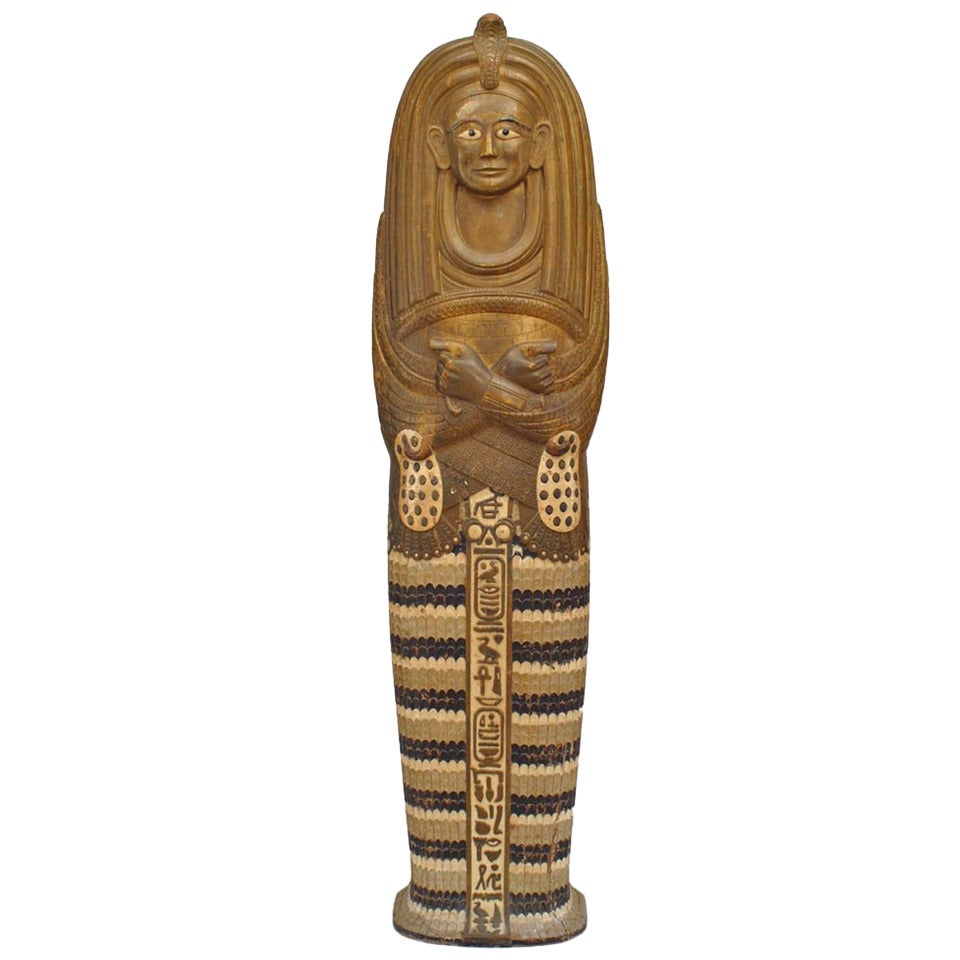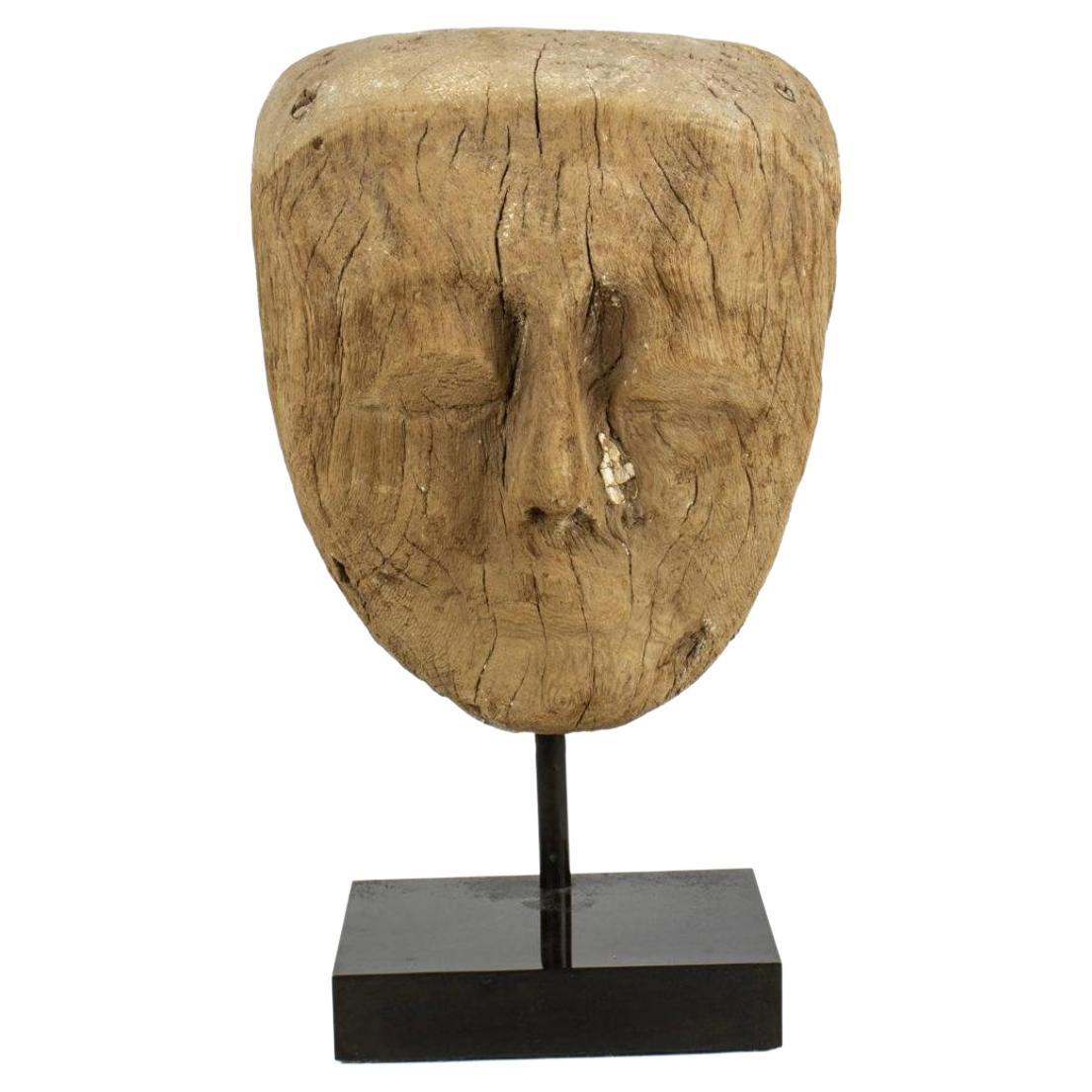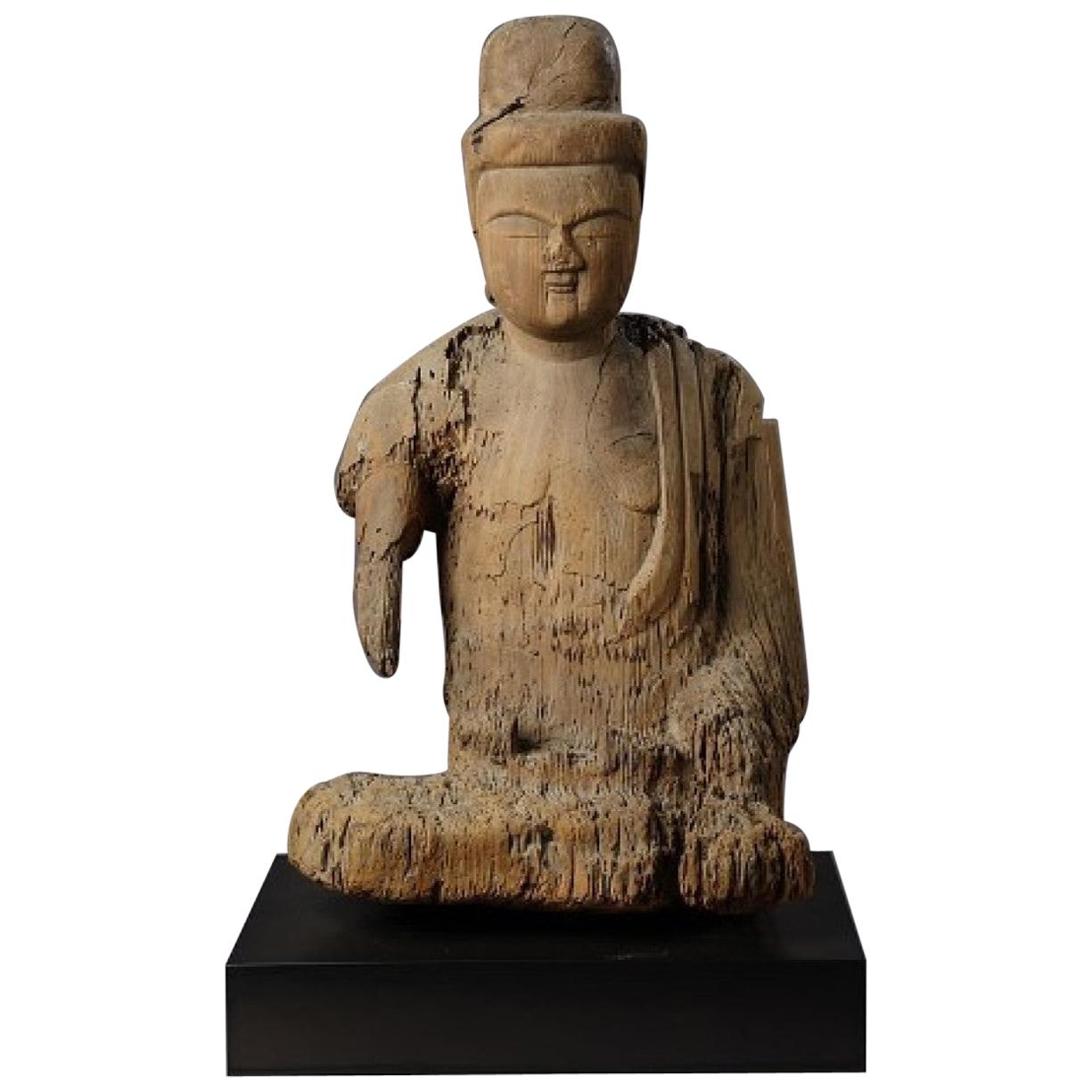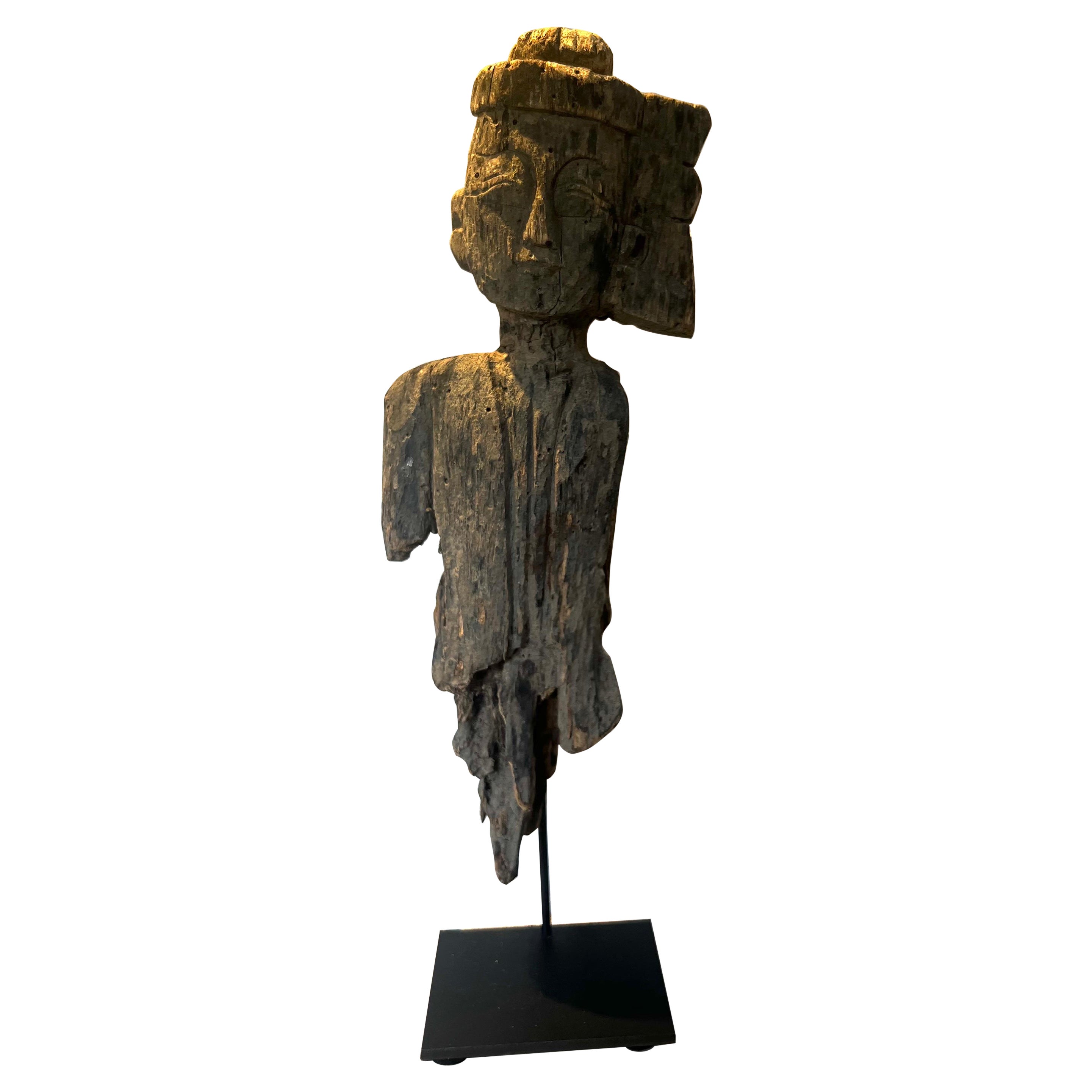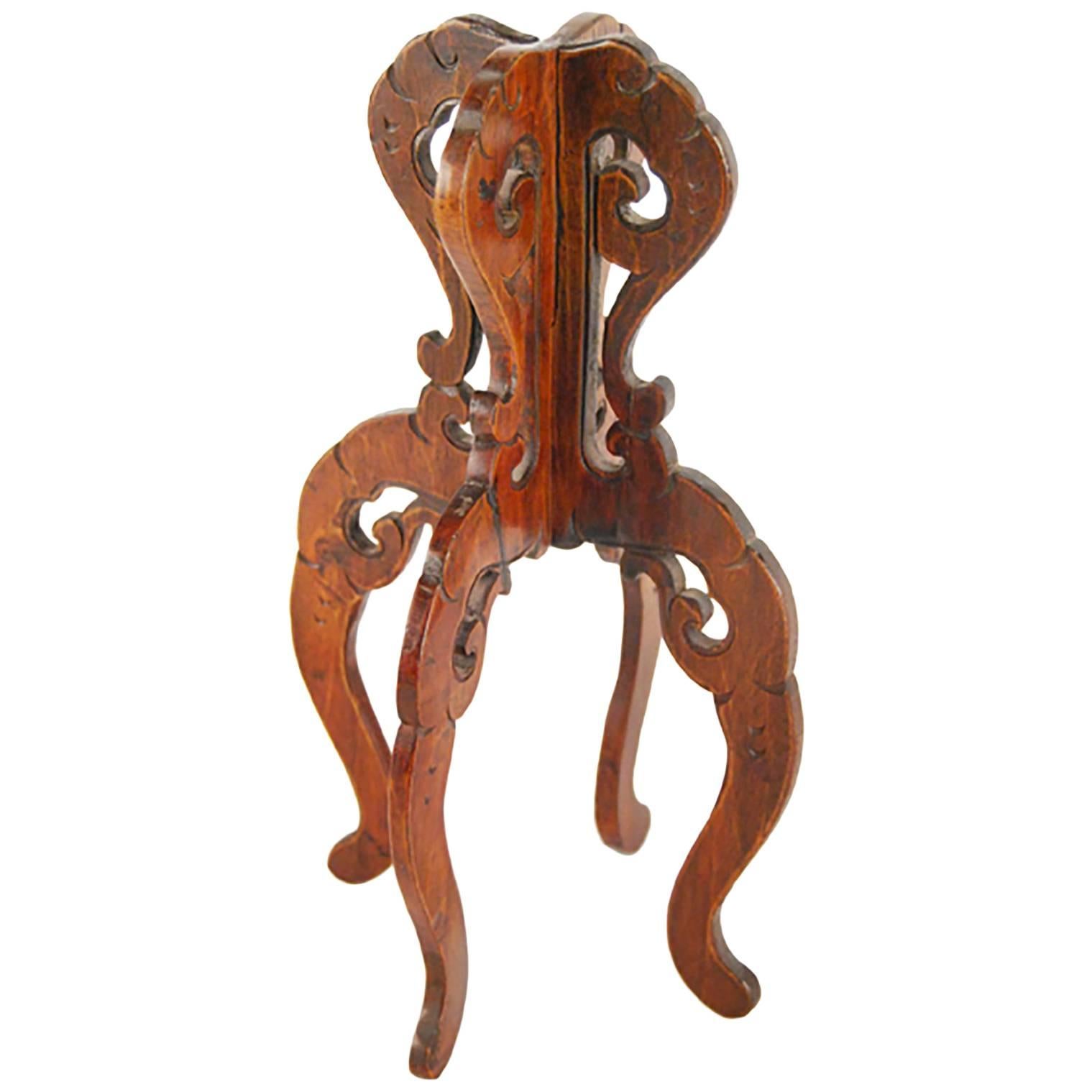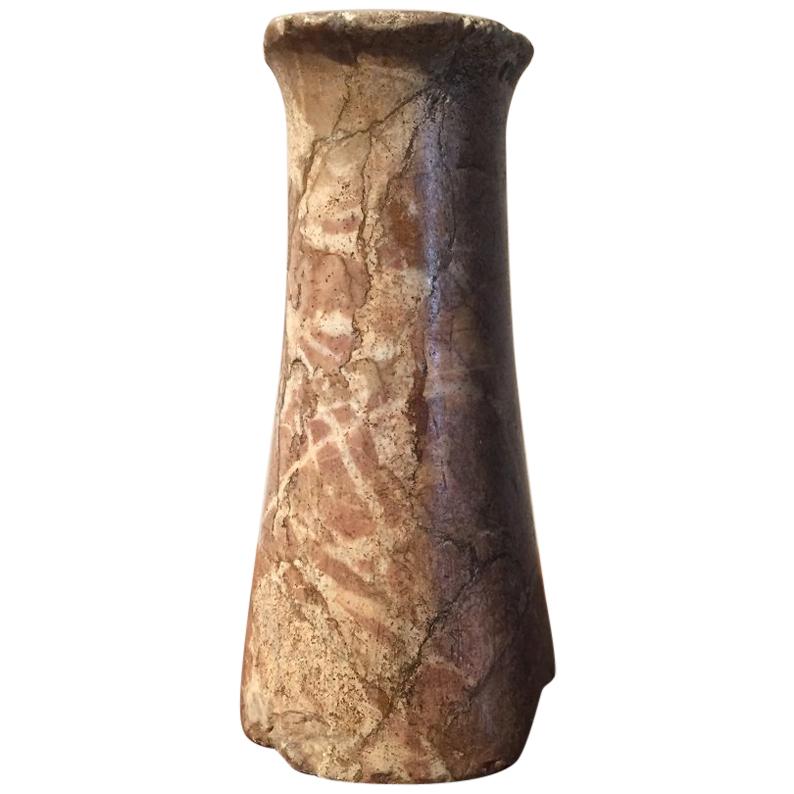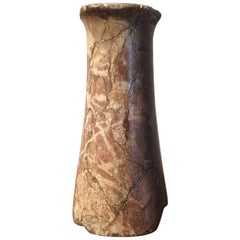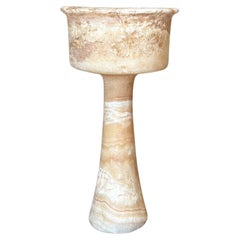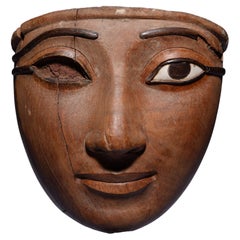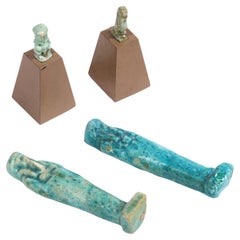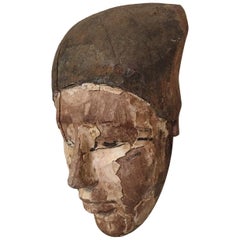
Sarcophagus Mask Egypt
View Similar Items
Want more images or videos?
Request additional images or videos from the seller
1 of 16
Sarcophagus Mask Egypt
About the Item
- Dimensions:Height: 13.4 in (34.04 cm)Width: 8.1 in (20.58 cm)Depth: 1.2 in (3.05 cm)
- Style:Egyptian (Of the Period)
- Materials and Techniques:Cedar,Cold-Painted
- Place of Origin:
- Period:
- Date of Manufacture:1250 BC
- Condition:Wear consistent with age and use.
- Seller Location:Vosselaar, BE
- Reference Number:1stDibs: LU2023312011443
About the Seller
5.0
Gold Seller
These expertly vetted sellers are highly rated and consistently exceed customer expectations.
Established in 1972
1stDibs seller since 2016
259 sales on 1stDibs
Typical response time: 1 hour
More From This SellerView All
- Bactrian Marble Column IdolLocated in Vosselaar, BEBactrian marble column idol, circa 3000-2000 Bc. It has a elegant tapering form with a undeep groove running on the top and bottom. The marble is a breccia type with striking vains i...Category
Antique 15th Century and Earlier Afghan Archaistic Antiquities
MaterialsMarble
- Ancient Bactrian Marble Idol Staff SceptorLocated in Vosselaar, BEA large Bactrian marble staff circa late 3rd-2nd millennium BCE. The Bactrian culture was discovered by Soviet archeologists in the 1970s in Afghanistan. Also called the Oxus culture...Category
Antique 15th Century and Earlier Afghan Antiquities
MaterialsMarble
- Large Bactrian Bronze Age Alabaster ChaliceLocated in Vosselaar, BEBactrian alabaster chalice, circa 3000-2000 BC. It has an elegant tapering formed base with a undeep rimmed cup. The alabaster is strikingly vained. ...Category
Antique 15th Century and Earlier Afghan Archaistic Antiquities
MaterialsAlabaster
- Prehistoric Stargazer Marble HeadLocated in Vosselaar, BEA small, Prehistoric Anatolian marble head of the kiliya type. Of highly stylized geometric form, the marble head is elliptical, with a faintly defined nos...Category
Antique 15th Century and Earlier Turkish Prehistoric Antiquities
MaterialsMarble
- Pair of Bronze Age Spiral PendantsLocated in Vosselaar, BEPair of Spiral pendants, bronze age, Europe, circa 1000 BC, 3 and 3 half inches 7 9 cm, mounted on custom stands. Provenance: From a private European collection; formed in the 1980s.Category
Antique 15th Century and Earlier European Antiquities
MaterialsBronze
$986 / set - Khmer Bronze HairpinLocated in Vosselaar, BEElegant and refined Khmer bronze hairpin dating between the 12th and 15th century.Category
Antique 15th Century and Earlier Cambodian Antiquities
MaterialsBronze
You May Also Like
- Exceptional Egyptian Sarcophagus MaskLocated in London, GBExceptionally Fine Wooden Sarcophagus Mask Third Intermediate Period, 21st Dynasty, circa 1069-945 BC. Acacia wood, rosewood, hippopotamus ivory Masterfully carved from a single piece of fine-grained hardwood, the present mask is characteristic of the most exquisite funerary art made during the 21st Dynasty, and was probably commissioned for a particularly high-ranking individual. The oval face displays a gently smiling mouth with full, outlined lips, furrows at the corners and a bow-shaped philtrum. The straight nose with rounded nostrils, the cheeks full and fleshy and the large, almond shaped eyes with heavy lids and tapering cosmetic lines, set below long, sweeping eyebrows. Social collapse across the Mediterranean in the Late Bronze Age meant that the 21st Dynasty in Egypt was a period of great turmoil. Trade routes were disrupted, governments collapsed, and mass migration occurred. Economic scarcity meant that traditional funerary practices in Egypt were also affected, with a lack of material and financial resources leading to the reuse of preexisting material. As a result, during the 21st Dynasty, 19th and 20th Dynasty coffins changed ownership rapidly and were heavily recycled for new purposes. Tombs were also unmarked allowing them to be shared by many people. These new practices brought forth a shift in the understanding of funerary paraphernalia. No longer important objects owned forever by the deceased, they were now simply seen as short-term transformative devices, whose symbolic and ritualistic meaning could be appropriated for others. However, paradoxically, the art of coffin-making also reached new heights during this period, and many of the richly dec- orated “yellow” coffins, characteristic of the 21st Dynasty, are remarkable works of art in their own right. Indeed, knowing that coffins were being reused throughout Egypt, the Egyptian élite set themself apart by commissioning lavish sarcophagi decorated with the images and texts meant to help guide them to the afterlife, and which would otherwise have adorned the tomb walls. As coffins were the chief funerary element which now identified the dead and allowed them a physical presence in the world of the living, their quality and appearance were of the utmost importance. The traditional coffin ensemble was made of three parts: a wooden mummy cover, which laid directly atop the mummy, an inner coffin, and an outer coffin, both made of a lid and case. Additional decorative elements, such as masks, were carved out separately and later glued or pegged to the lids. After the completion of the painted decoration, the sarcophagus was covered in a varnish to give it its yellow colour. Gilding was sometimes used for the coffins of the high priests’ families, notably on parts representing naked skin, such as the face mask. However, some of the élite tactically avoided gilding altogether as to ensure that their coffin would not be looted. When manufacturing the inner and outer coffins, particular attention was paid to the woodwork. Displaying the skill of the carpenter, this type of funerary art has largely remained unparalleled throughout Egyptian history. The principal wood used to craft the present mask is Acacia nilotica. The evergreen Egyptian acacia was considered sacred and said to be the tree of life, the birthplace of the god Horus, as well as symbolic of Osiris, the god of the dead and resurrection. The modelling of the face in the wood is superb, but the inlays also help mark this mask out as exceptional. Inlaid eyes and eyebrows were extremely rare and reserved to the finest and most expensive coffins. Traditionally, eyes were made of calcite, obsidian, or quartz, and eyebrows of coloured glass paste or bronze. Here, the pupils, eyebrows, and cosmetic lines are inlaid with Dalbergia melanoxylon, a rare type of wood which belongs to the rosewood genus. In antiquity, however, it was known as Ebony of the Pharaohs, from the Egyptian word “hbny”, meaning dark timber, because of its black, lustrous appearance. An extremely dense and hard wood requiring significant skill to work with, ebony was a luxury material highly coveted by the pharaohs themselves, to make furniture, decorative and funerary objects. The wood was imported with great effort from the southern Land of Punt, most likely modern Sudan, Ethiopia, Djibouti, and Eritrea, alongside other luxury goods such as gold and ivory. A magnificent ebony throne, recovered in the tomb of King Tutankhamun, illustrates the incredible aesthetic potential of this material and why it was so highly valued by Egyptian royalty. Only élite members of Egyptian society could have afford- ed Ebony of the Pharaoh inlays for their funerary mask. The sclerae on the present piece were once both inlaid with hippopotamus ivory. Whiter than elephant ivory, this type of ivory is also denser, and more difficult to carve. The use of this luxury material, reputed for its gleaming appearance, enhances the lifelikeness of the eyes. For the Egyptians, hippopotamus ivory was imbued with magic powers. The hippopotamus was indeed both feared and venerated due to its aggressive behaviour. Whilst the male hippopotamus was associated with danger and chaos, the female was benevolent and invoked for protection, especially of the house and of mothers and their children, through the hippopotamus goddess Tawaret. Thus, not only was hippopotamus ivory used as an inlay and to make practical objects, such as combs and clappers, but it was also used to make talismans like apotropaic wands or knives. Made during a time of scarcity where few could afford made-to-order coffins, the present mask could have only belonged to one of the highest-ranking individuals in society. Undoubtedly one of the finest Egyptian coffin...Category
Antique 15th Century and Earlier Egyptian Egyptian Figurative Sculptures
MaterialsFruitwood, Hardwood
- Set of Four Egyptian Antiquities, Pair of Sarcophagus Faience & Two FigurinesLocated in New York, NYThis captivating authentic Egyptian Faience set was realized in ancient Egypt circa 3100 BCE. It offers two sarcophagus figurines- suggestive of miniature versions of King Tut's tomb- hand finished in a beautiful turquoise hue (a glaze created by pulverizing the stone into pigment). Additionally, the set features two figurines (one representative of the Egyptian god Anubis), and the other seemingly a depiction of one of the ruler's as a young child also in a turquoise glaze atop volumetric rhombus plinths with tapered sides in a refined terra cotta hue. Full of historical importance (and stunning as stand alone objects) this collection of Egyptian antiquities...Category
Antique 15th Century and Earlier Egyptian Egyptian Figurative Sculptures
MaterialsFaience
- Egyptian Carved Sarcophagus FigureLocated in New York, NYEgyptian carved and painted life size sarcophagus figure (19/20th Cent)Category
Antique 19th Century Unknown Egyptian Sculptures
MaterialsWood, Paint
- Ancient Egyptian Mask, 900-600 BCELocated in Doylestown, PAAn ancient burial mask that was created to adorn a sarcophagus, 26th Dynasty, Minia, Mid-Upper Nile, circa 900-600BCE, from the collection of Joanna Barnes and Jack Warner, (Warner B...Category
Antique 15th Century and Earlier Egyptian Egyptian Mounted Objects
MaterialsWood
$1,800 Sale Price20% Off - Brass Alam Hand Cutwork Calligraphy in the Shape of a Falcon, 20th CenturyLocated in Islamabad, PKBrass Alam Persian hand Cutwork Calligraphy in the shape of a falcon, 20th century. The ornamental calligraphy arranged within a frame of a bird of prey -The Falcon. The letters are those of the Shia Muslim...Category
20th Century Persian Islamic Antiquities
MaterialsBrass
- Kamakura Period Japanese Shinzu SculptureLocated in Hudson, NYKamakura Period Japanese Shinzu sculpture. Shinzo is a representational figure of a god or spirit in the Shinto religion. This sculpture was carved fro...Category
Antique 15th Century and Earlier Japanese Antiquities
MaterialsWood
